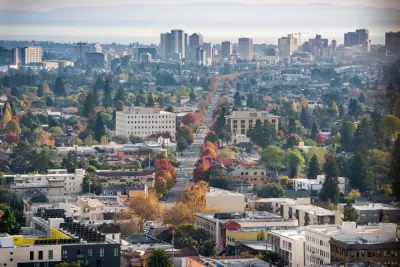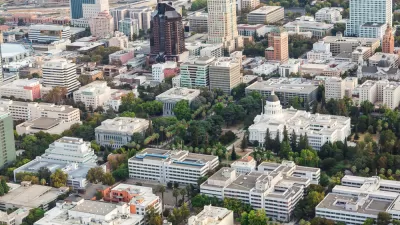Never mind the 40 million that demographers predicted the Golden State would reach by 2018. The state's population dipped below 39 million to 38.965 million last July, according to Census data released in March, the lowest since 2015.

Projections are just that. Case in point – California population.
“Forty million people will live in California by the end of 2018 and 50 million by 2048, the state Department of Finance said in estimates released Tuesday,” reported The Mercury News on May 8, 2012.
And then there's reality.
“The U.S. Census Bureau reported in March that California’s population as of last July had dropped to an estimated 38,965,000,” wrote George Skelton, Capitol Journal columnist for the Los Angeles Times on April 8. “That’s down by 75,400 in a year — and 573,000 below California’s peak of 39.5 million in 2020.”
[Correspondent's note: The Census Bureau released county data on March 14. The July 2023 population is the same as the estimates posted last December, noting the state's 2015 population.]
Domestic migration
Skelton offers a number of reasons for the three-year population decline, including a questionable “carrying capacity" explanation, before adding:
But “the biggest reason we’re losing population is that people are moving out,” says [Hans Johnson, a demographer at the nonpartisan Public Policy Institute of California]. “That has slowed, but we’re still losing hundreds of thousands to other states.” That’s a net loss after factoring in people moving to California.
And why are they leaving? Mainly because of California’s high cost of living, particularly housing. That’s the biggest reason movers cite.
While domestic migration “is the main cause of California’s continuing population loss,” it is not the only factor, adds Skelton.
“California’s fertility rate has fallen faster than most [states],” the public policy institute reported in October. “In 2008 its rate was above the national average (2.15). By 2020, it fell to the seventh lowest (1.52).”
Is California too blue?
According to the California Community Poll, an ongoing partnership between Strategies 360 and the Los Angeles Times, the state's politics and policies play a role as well.
“Nearly 30% of [California residents] surveyed said they might leave because the state’s policies and laws don’t align with their political views, a reflection of the polarization of the state and the nation at the moment,” reported the Times on June 23, 2023.
That's consistent with the findings of a policy brief, “California's population drain," published October 2023 by the Stanford Institute for Economic Policy Research, that found that "[t]wo-thirds of those who moved said that politics was not a factor in their decision.” The researchers add under 'key takeaways':
- California’s environmental policies and mandates could fuel the economic and political exodus to more lenient states like Arizona and Texas.
Hat tip to the Los Angeles Times 'Essential California' newsletter, April 8: “California is still losing Californians. It’s no mystery why.”
Related:
- Depopulation Patterns Get Weird, April 10, 2024
- California Decline: Population Likely Peaked Three Years Ago, July 27, 2023
FULL STORY: Why Californians are fleeing this once-Golden State

Planetizen Federal Action Tracker
A weekly monitor of how Trump’s orders and actions are impacting planners and planning in America.

Maui's Vacation Rental Debate Turns Ugly
Verbal attacks, misinformation campaigns and fistfights plague a high-stakes debate to convert thousands of vacation rentals into long-term housing.

San Francisco Suspends Traffic Calming Amidst Record Deaths
Citing “a challenging fiscal landscape,” the city will cease the program on the heels of 42 traffic deaths, including 24 pedestrians.

Amtrak Rolls Out New Orleans to Alabama “Mardi Gras” Train
The new service will operate morning and evening departures between Mobile and New Orleans.

The Subversive Car-Free Guide to Trump's Great American Road Trip
Car-free ways to access Chicagoland’s best tourist attractions.

San Antonio and Austin are Fusing Into one Massive Megaregion
The region spanning the two central Texas cities is growing fast, posing challenges for local infrastructure and water supplies.
Urban Design for Planners 1: Software Tools
This six-course series explores essential urban design concepts using open source software and equips planners with the tools they need to participate fully in the urban design process.
Planning for Universal Design
Learn the tools for implementing Universal Design in planning regulations.
Heyer Gruel & Associates PA
JM Goldson LLC
Custer County Colorado
City of Camden Redevelopment Agency
City of Astoria
Transportation Research & Education Center (TREC) at Portland State University
Jefferson Parish Government
Camden Redevelopment Agency
City of Claremont





























